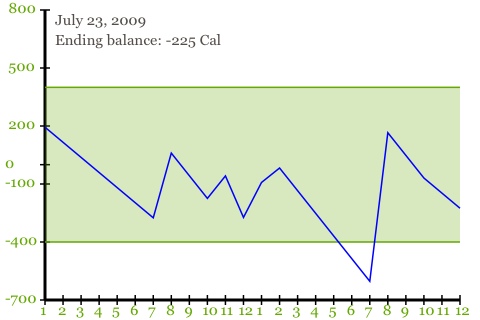Documentation
Resources on Within-Day Energy Balance
Document 1
This journal article, published in the July 2007 issue of the American College of Sports Medicine's Health and Fitness Journal, discusses the reasons why within-day energy balance is a critically important strategy for improving weight and body composition.
Document 2
This journal article, published in 2000 in Medicine & Science in Sports & Exercise, assessed the within-day energy balance of 4 groups of elite athletes (artistic gymnasts, rhythmic gymnasts, middle-distance runners, and long-distance runners) and found that those who restricted caloric intake the most during the day, had the highest body fat levels.
Document 3
This podcast is an interview between Dr. Monte and Dr. Benardot, recorded live for Fitness Rocks in 2008, and includes a discussion of within-day energy balance.
Document 4
This is an excerpt from a book by Susan Kleiner and Magie Greenwood-Robinson, entitled 'Power Eating' (Human Kinetics Publisher, © 2009). This chapter, entitled 'Implement an Antifat Diet Strategy' discusses Dr. Benardot's findings and dietary principles related to within-day energy balance.
Implement an antifat diet strategy.pdf
Document 5
This article, by New York Times correspondent Gina Kolata, appeared in the Science section of The New York Times on July 18, 2006. This article discussed the strategies the USA marathoners followed leading up to and including the 2004 Athens Olympic Games marathon. Dr. Benardot's within-day energy balance strategy is discussed. (The 2004 Athens Olympics marathon ended up being the first time in history the USA won two Olympic marathon medals at the same Olympic games.)
Document 6
The women's 2004 Olympic Marathon Coach, Julia Emmons, wrote this article in the Jan/Feb 2005 issue of Marathon & Beyond. She discussed the Olympic experience for the marathoners, and included multiple references to the within-day energy balance strategies followed by the Olympians leading up to the Olympic marathon.
They Practice on Mountains_Marathon&Beyond.pdf

